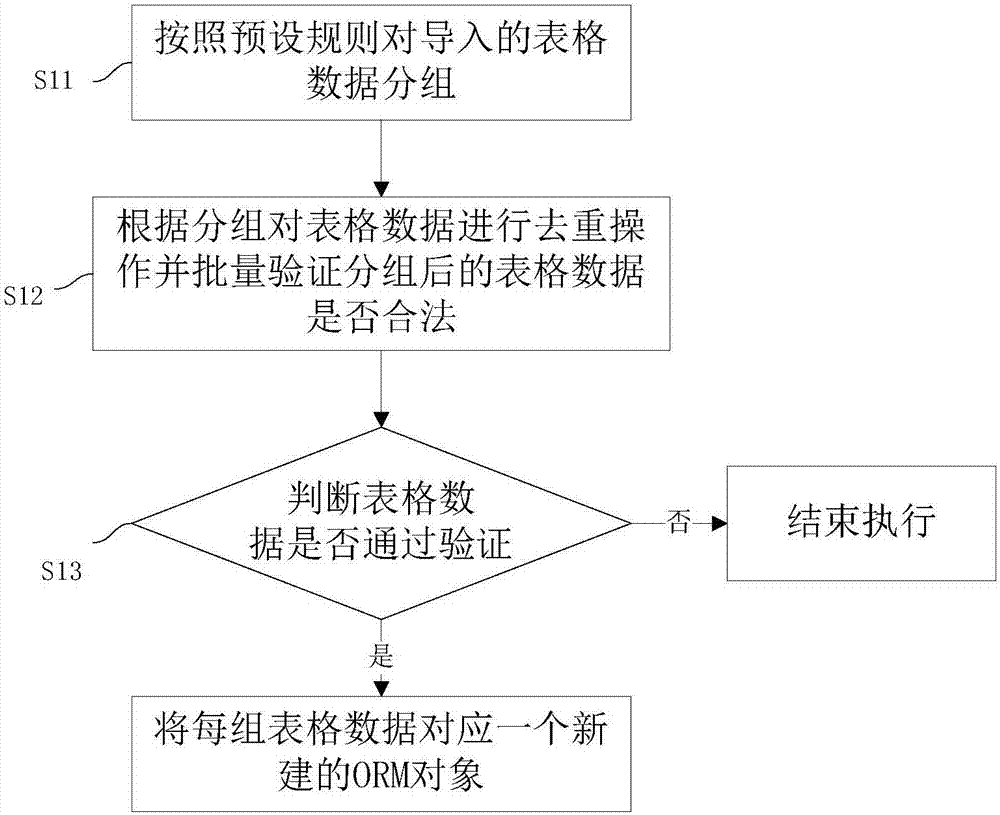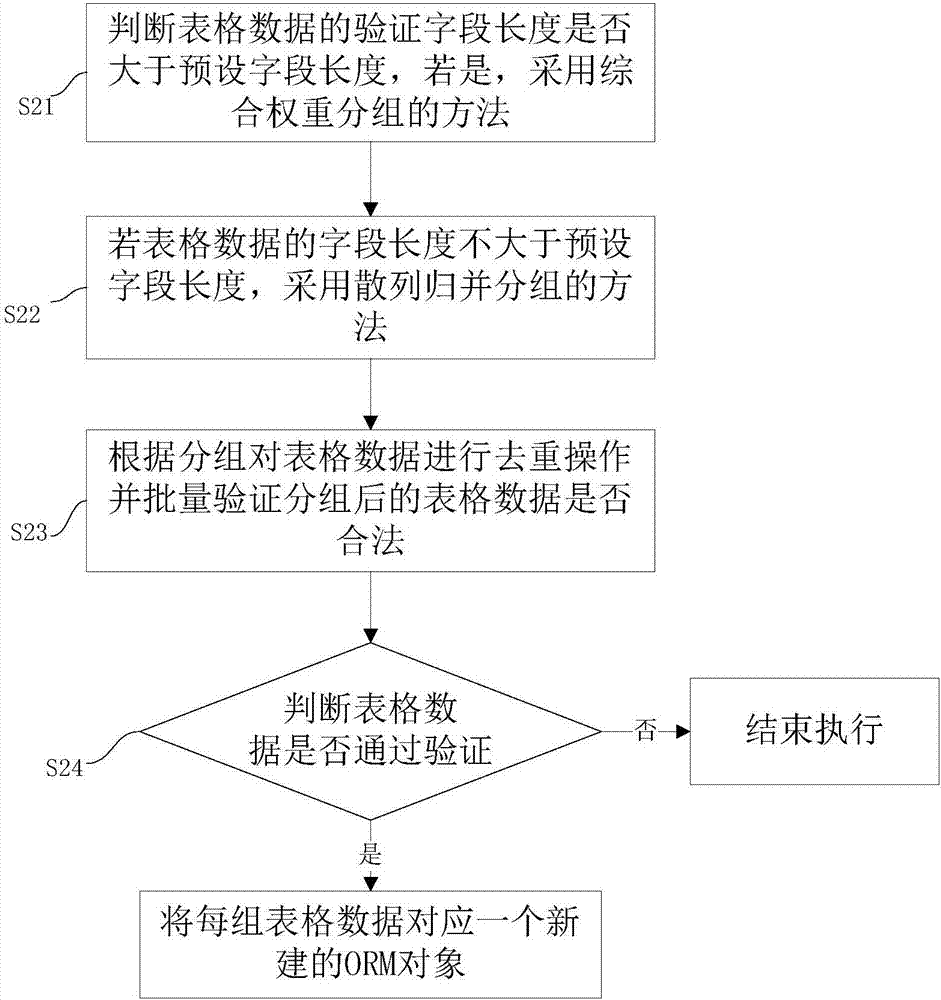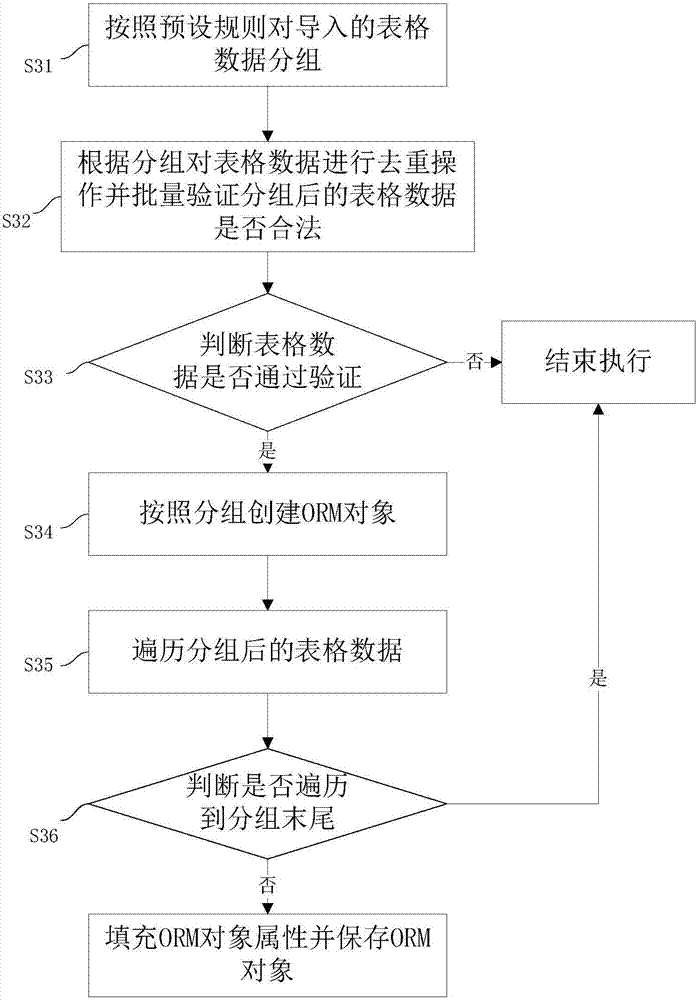Table data importing method and system
A form data and group data technology, applied in the field of data processing, can solve the problem of repeated verification of form data ORM object sharing and reuse, etc., to achieve the effect of improving memory usage efficiency, improving import efficiency, and saving computer resources
- Summary
- Abstract
- Description
- Claims
- Application Information
AI Technical Summary
Problems solved by technology
Method used
Image
Examples
Embodiment 1
[0066] This embodiment provides a form data import method, such as figure 1 shown, including steps:
[0067] S11: Group the imported form data according to preset rules;
[0068] S12: Perform deduplication operations on the form data according to the grouping and verify in batches whether the grouped form data is legal;
[0069]S13: Determine whether the table data has passed the verification, if not, end the execution; if so, correspond each set of table data to a newly created ORM object.
[0070] ORM is object-relational mapping, which is a program technology used to realize the conversion between data of different types of systems in object-oriented programming languages. In effect, it actually creates a "virtual object database" that can be used in programming languages.
[0071] The ORM framework uses metadata to describe the details of object-relational mapping. Metadata generally adopts XML format and is stored in a special object-mapping file.
[0072] Among them...
Embodiment 2
[0111] This embodiment provides a form data import method, such as figure 2 shown, including steps:
[0112] S21: Determine whether the verification field length of the form data is greater than the preset field length, if so, adopt the grouping method of comprehensive weight;
[0113] S22: If the verification length of the form data is not greater than the preset field length, adopt the method of hash merge and grouping;
[0114] S23: Perform deduplication operations on the form data according to the grouping and verify in batches whether the grouped form data is legal;
[0115] S24: Determine whether the table data has passed the verification, if not, end the execution; if so, correspond each set of table data to a newly created ORM object.
[0116] The difference from Embodiment 1 is that step S11 includes step S21 and step S22.
[0117] There are many ways to group data, and they are very flexible. For example, you can group data with similar fields, group data with th...
Embodiment 3
[0151] This embodiment provides a form data import method, such as image 3 shown, including steps:
[0152] S31: Group the imported form data according to preset rules;
[0153] S32: Perform deduplication operations on the form data according to the grouping and verify in batches whether the grouped form data is legal;
[0154] S33: Judging whether the form data has passed the verification, if not, ending the execution;
[0155] S34: If the form data passes the verification, create an ORM object according to the group;
[0156] S35: traverse the grouped table data;
[0157] S36: Determine whether to traverse to the end of the group, if so, end the execution; otherwise, fill in the ORM object attributes and save the ORM object.
[0158] The difference from Embodiments 1 and 2 is that the step of associating each set of table data with a newly created ORM object specifically includes steps S33, S34, S35, and S36.
[0159] After the group verification is completed, an ORM o...
PUM
 Login to View More
Login to View More Abstract
Description
Claims
Application Information
 Login to View More
Login to View More - R&D
- Intellectual Property
- Life Sciences
- Materials
- Tech Scout
- Unparalleled Data Quality
- Higher Quality Content
- 60% Fewer Hallucinations
Browse by: Latest US Patents, China's latest patents, Technical Efficacy Thesaurus, Application Domain, Technology Topic, Popular Technical Reports.
© 2025 PatSnap. All rights reserved.Legal|Privacy policy|Modern Slavery Act Transparency Statement|Sitemap|About US| Contact US: help@patsnap.com



